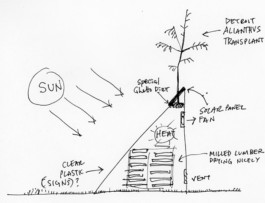In 2000, together with Ingo Vetter, I travelled to Detroit for the first time. Commissioned by the Werleitz-Biennale "Real Work" (curators: Christiane Mennicke / Corinna Koch) we set out to document the ruins of industrialization. They were there, for sure, but what we didn't expect to find was a vibrant and diverse urban agriculture community. In the following years, we made numerous trips to Detroit, met artists and farmers and artist farmers, community organizers and dedicated high school teachers. We documented their activities and conducted many interviews.
Annette Weisser: We almost lost Detroit, taz Magazin, 20. Januar 2001
I am Farming Humanity
Video, 16:40 Min., Color
English with German/French/Swedish subtitles
Interview with Lee Burns, urban farmer and co-founder of the "Detroit Agriculture Network."
Detroit Tree of Heaven Woodshop
In 2005 we founded, together with artist Mitchell Cope, the Detroit Tree of Heaven Woodshop. The tree of heaven (lat. ailanthus) aka "ghetto palm" is ubiquitous all over the abandoned lots and dilapidated factory sites. The tree originates from China and came with waves of Chinese migrant workers because of its use in Chinese traditional medicine. Other specimen were imported to the USA by botanists for parks and private gardens. As a typical neophyte, the tree of heaven soon left its confinements and rapidly spread all over the USA. The tree is highly resilient to unfavorable conditions, it tolerates contaminated soil and drought, and it spreads through seeds as well as off-shots. Once it has taken roots, it's almost impossible to get rid of. For all these qualities, we chose the tree of heaven as an icon for the resilience and the staying power of the people of Detroit. By trial and error, we learned how to cure the wood and to work with it. We collaborated with local experts—artists, sociologists, a bicycle-powered tree grooming business, a mobile sawmill, a small carpentry business —and harvested trees from abandoned sites or from people's front gardens.
We made museum benches, tables, vessels, picture frames, ladders. The SMART Museum, Chicago, commissioned a work and as a logical next step, and because we liked the absurdity of it, we purchased a lot and planted a tree farm. In recent years, the activities of the woodshop have slightly moved away from Detroit. In 2016 we harvested trees in Berlin and by now, the timber should be good to go.
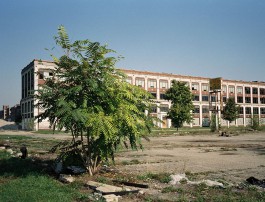
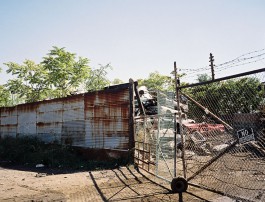
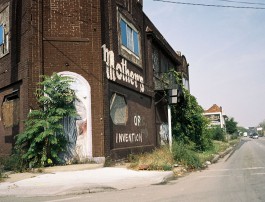

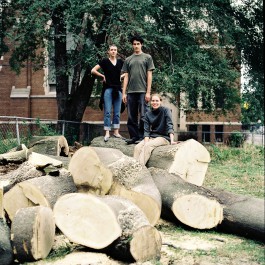
Shrinking Cities—Schrumpfende Städte
Multi-part exhibition project (curator: Philip Oswalt)
MOCAD Detroit, 2007
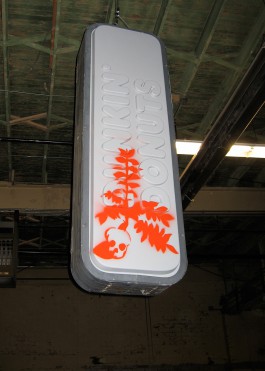
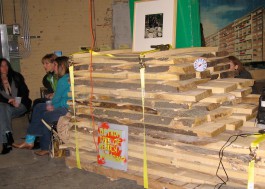
Museum Benches
Also exhibited at:
2009 Subvision, curator: Lise Nellemann, HafenCity, Hamburg, Germany (group show)
2008 Heartland, curators: Charles Esche, Kerstin Niemann, Van Abbemuseum, Eindhoven, The Netherlands (group show, cat.)
2008 Shrinking Cities ff. /// Analysis, Interventions, Prognosis , curator: Philipp Oswalt, Akademie der Künste, Berlin, Germany (group show)
2007 Shrinking Cities, curator: Philipp Oswalt, SPACES Gallery, Cleveland, USA (group show)
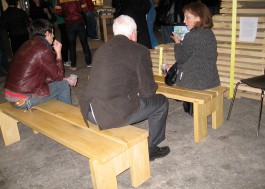
Shrinking Cities—Schrumpfende Städte
Multi-part exhibition project (curator: Philip Oswalt) KW Berlin, 2004
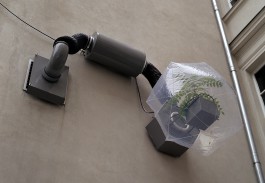
Tree Farm, 2010
Detroit Tree of Heaven Woodshop has established its first Tree of Heaven Farm on a vacant Detroit city lot for future harvest. We planted seedlings in beds of car tires. The tires protect the young trees while they are growing but also determine their lifetime to a size when the trunks are suitable for processing. We assume this period of growth to be approx. 40 years. Within this timespan we will maintain the plantation and keep the lot free of any kind of real estate speculation or building activity.
The SMART Museum of Art in Chicago purchased this artwork for the permanent collection and will receive an annual report about the progress of the Tree Farm.
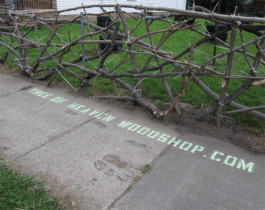
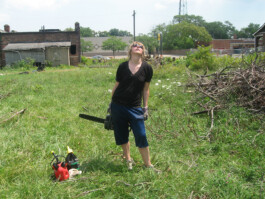
Harvesting for the Fence
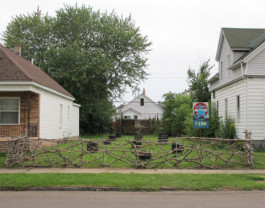
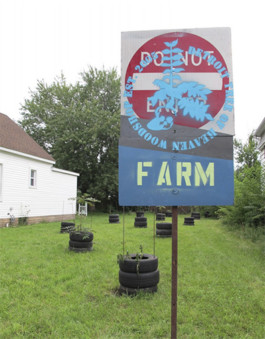
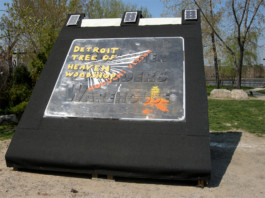
Solar Powered Kiln (Design and Construction: Mitchell Cope)
